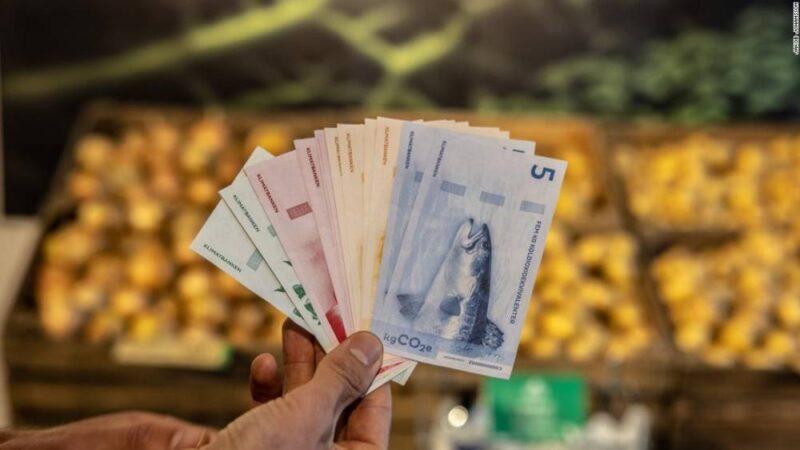Orleans, France (CNN Business)Food labels already indicate how good or bad a product is for you. But good or bad for the planet? That’s often much less clear. Now a growing number of brands are labeling their products to show their climate impact.
Swedish food company Felix is one of them. For two days in October, Felix opened a pop-up store in Stockholm, where all items were priced based on their carbon footprint. The bigger their emissions, the higher the price.The idea was to demonstrate how easy it is for shoppers to make climate-friendly choices when products are clearly labeled. Each customer was given a budget in “carbon dioxide equivalents” to shop for a week’s worth of groceries.
While the pop-up was a short initiative to raise awareness, Felix already lists on its website the greenhouse gas emissions associated with all its foods — from the cultivation of the ingredients to the finished product. Products are given a “low climate footprint” label if their emissions are no more than half of the average for food in Sweden. Felix’s marketing manager Thomas Sjöberg says it’s important that the labeling can be easily understood. Read More”We know that the numbers alone don’t make sense to consumers,” says Sjöberg. “To give the figures meaning, we have created a climate scale that clearly shows the current average and which climate footprint is low.”

Shoppers at the Felix pop-up store paid for food using “carbon dioxide equivalents.”A poll commissioned by the Carbon Trust, which certifies the carbon footprints of various products, found that two-thirds of consumers in France, Germany, Italy, the Netherlands, Spain, Sweden, the United Kingdom and the United States support carbon labeling on products. No government has yet made labeling a legal requirement, according to the Carbon Trust.However, climate labels are starting to take off. Meat-substitute brand Quorn introduced climate labels for 60% of its product volume earlier this year, and Unilever (UL) recently set out a plan to communicate the carbon footprint of every product it sells.
Complex formula
Evaluating a food’s true carbon footprint isn’t easy and brands are teaming up with specialist platforms that crunch data using complex calculation tools to work out emissions across the whole production chain.Oatly calculates the footprint of its oat-based drinks, from the agricultural processes all the way to the grocery store, with the help of CarbonCloud, a startup spun out of research at Chalmers University of Technology, in Sweden. “We have developed a web platform that allows the food producers to perform detailed climate assessments without them needing to understand any of the science or the mathematics behind it,” explains CarbonCloud CEO David Bryngelsson.Companies like Oatly input information including their ingredients, energy use, waste production and how products are shipped, and CarbonCloud’s web tool does the rest.As well as using the information to label their products, businesses can see how their climate impact would change if they switched suppliers or to renewable energy, for example.CarbonCloud has done assessments for hundreds of products and brands including Estrella, Nude and Naturli’, and says interest is increasing rapidly.”The industry is screaming for this — to get reliable, high detailed information with as little work as possible,” says Bryngelsson.
At the moment the food industry doesn’t have a standardized approach to calculating carbon figures, but Sjöberg says the most important thing is to give consumers the information that’s currently available.”In the future, hopefully we will see a common ground for how we calculate and how we label products,” he says. “But as for right now, the climate can’t wait.”
Source: edition.cnn.com

